Made with 50% Less Cement, This Couple’s House Remains Naturally Cool Without ACs
Sustainable home: All wood in their house is upcycled packaging wood used in the automobile industry. And an old foot-operated sewing machine serves as their wash basin stand. You have to see it to believe this marvel.
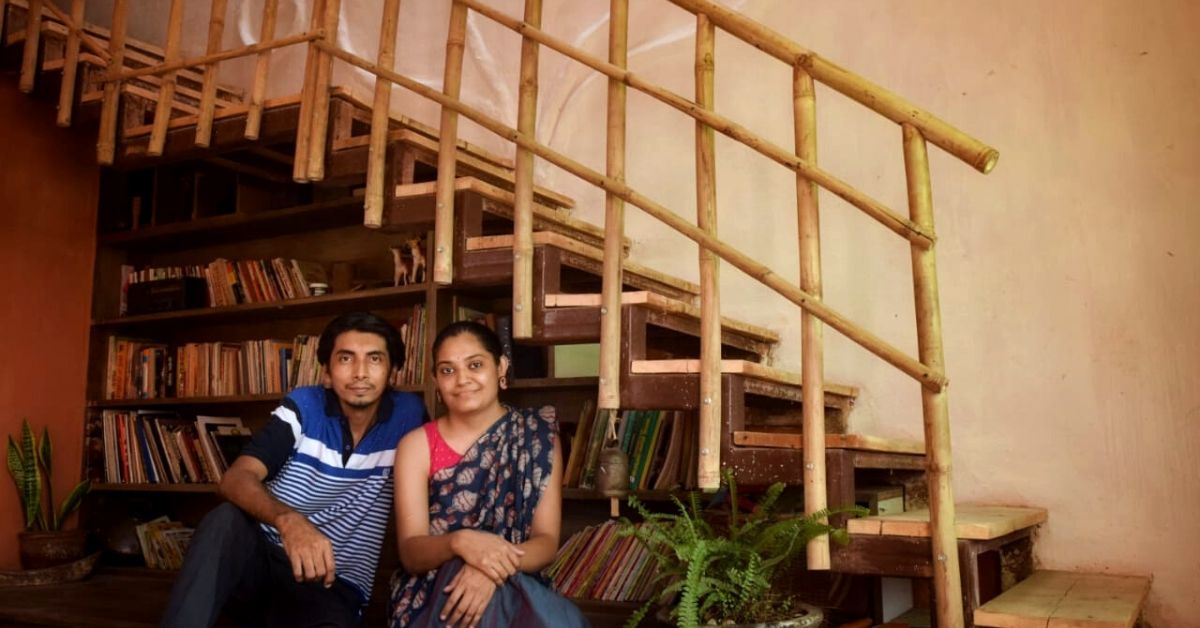
It is safe to say that the values we grow up with stay with us for a lifetime. For Aurangabad-based Gargi Parmar, upcycling waste and leading a sustainable, zero-waste lifestyle came naturally.
“My grandmother and mother always reused materials, giving a new twist to old items instead of discarding them. For example, my father’s pants would be transformed into cloth bags or pillow covers. This way, every item in our household had a longer life,” reminisces the 36-year-old.
‘The Better Home’ brought to you by ‘The Better India’
We created ‘The Better Home’ because you shouldn’t have to choose between non-toxic ingredients and effective cleaning. Our cleaners are safe for babies, pets, skin and our oceans.
Explore our range of powerful, earth-friendly cleaners here.
She was so inspired by the idea of upcycling that she even founded, ‘Bano Batwo’, a brand selling upcycled fashion accessories, stationery, and home decor fashioned from old t-shirts, glass, wood and other scrap materials.

Naturally, when it came to building a home, Gargi and her Civil Engineer husband Kiran Bhale decided to go off the beaten path to construct a home that truly exuded their philosophy of eco-consciousness.
Now, the couple lives in a home that uses 50 per cent less cement than any conventional structure. This, they have achieved, by recycling mud and wood to make staircases and windows. By employing traditional and resource-saving building techniques, they have also been able to reduce their use of bricks by 30 per cent.
There’s ample light during the day which ensures they do not have to switch on lights. The ventilated house is cool even in the hottest months and has no ACs.
Additionally, different elements in the interiors have been a result of upcycling, giving the house a unique personality. Gargi shares with us how she embarked on the path of conscious living and how her home is a pure reflection of that.
Embracing Eco-conscious Principles For Their Sustainable Home
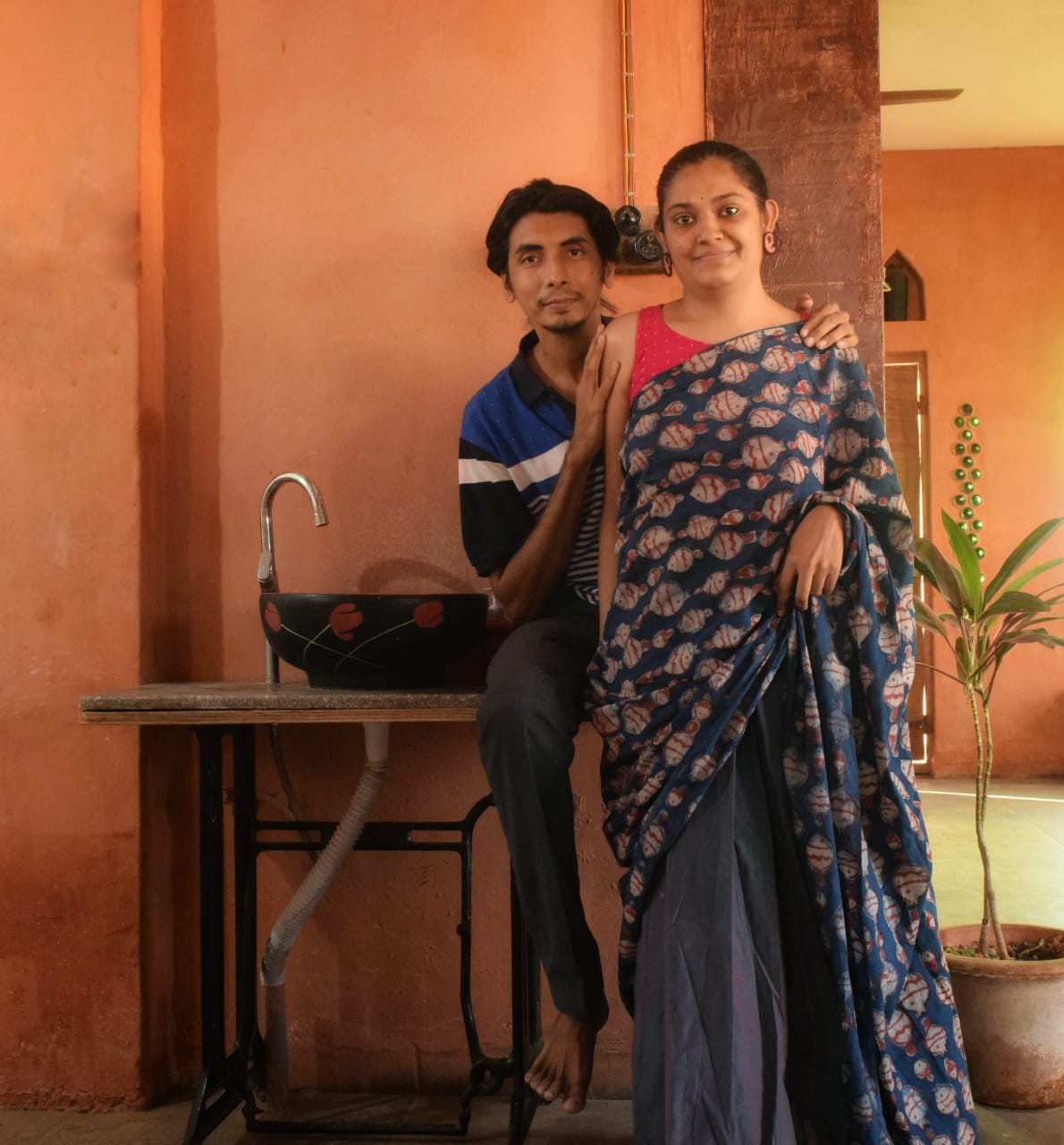
As a student, Gargi became increasingly interested in fashion. She decided to pursue a Bachelor’s in Fashion designing from the School of Fashion Technology in Pune.
During one of her college projects, Gargi realised that the fashion industry is the second most polluting industry. It was then that she decided not to contribute to the ever-growing waste.
So, after college, she worked with companies like ‘Aura Herbal textiles’ in Ahmedabad that dealt in natural dyeing of fabrics. Between 2011 and 2014, she worked with ‘Do U Speak Green’ in Mumbai, which uses natural fabrics derived from cotton to make t-shirts.
But in mid-2014, she came back home to embrace upcycling by making beautiful products from scraps. This is how Bano Batwo was born.
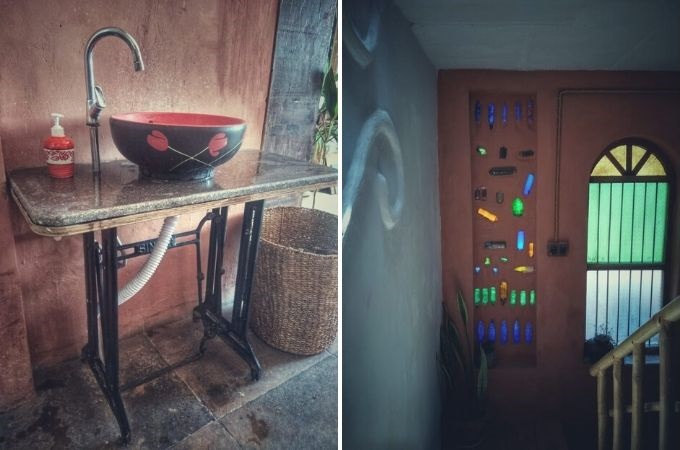
When she decided to sell her products, she turned to her friend Kiran for pictures. A civil engineer, Kiran, started ‘Imagineers’, his sustainable architectural, structural consultancy and interior design company in Aurangabad in 2014. The duo found common ground in their values and got married in 2016.
In 2018, they bought a 1,500 sq ft plot and employed sustainable practices in building their ‘forever home’. But, there were a few hurdles that the duo had to overcome.
“In metropolitan cities, people appreciate sustainability and architects can deliver because they know resource-saving techniques that are also good for the planet. But in Aurangabad, it’s hard to find people who know such techniques. We looked for old masons in villages, but it was difficult for us to locate them,” she says.
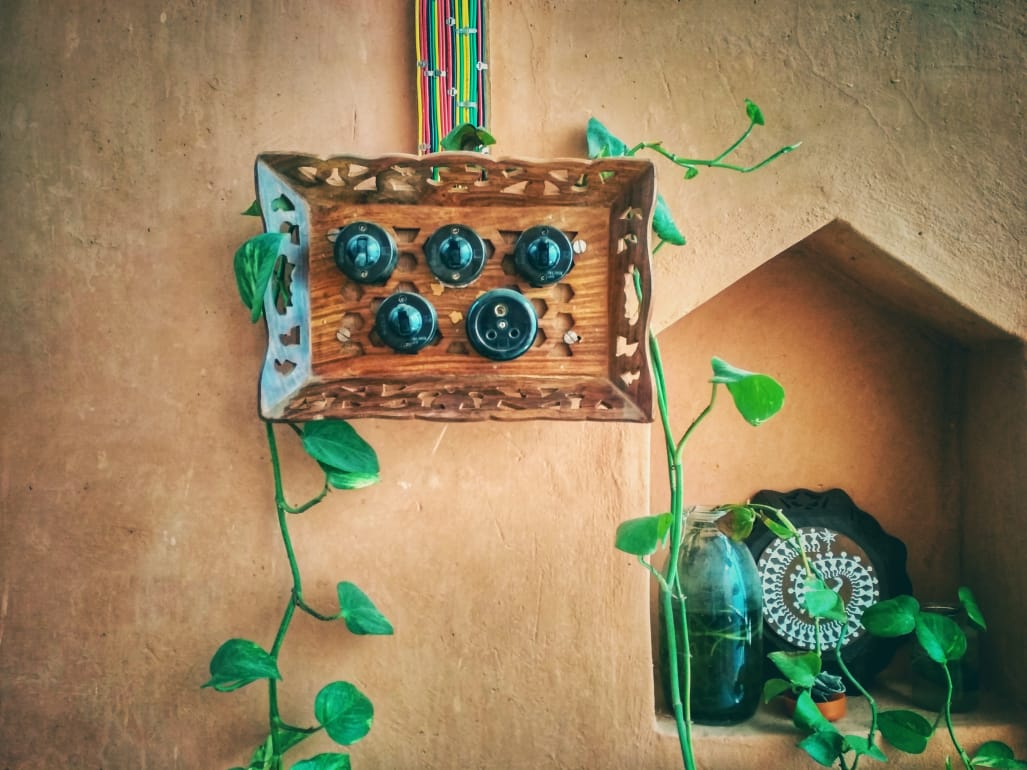
Gargi adds that people had shifted to living in concrete homes and not mud structures, which meant that traditional building techniques were lost.
But luckily, for the duo, Kiran’s relative from the village shared some knowledge on traditional techniques. This marked the beginning of the journey towards the duo’s sustainable home.
Finding Value in Waste
To build a truly sustainable home, Gargi and Kiran were mindful about sourcing local materials to off-set carbon footprint from transporting materials across distances.
The distant grand aunt from Bhalegaon (close to Aurangabad) informed them about this mud that was used by villagers in the region. It would be infused with ingredients like jaggery and methi and helped in termite resistance, water resistance, and adding strength to buildings.

This mud is abundant in villages and is an alternative to cement, which is used as mortar for laying the bricks. The methi and jaggery mixture (with water) is added to the mud only after it has been fermented for two days.
Then, they add sand to it to use as a bonding agent while building the walls.
Also, they researched bricklaying methods and came across famous architect Laurie Baker’s ‘rat-trap bond’ technique. Here, bricks are placed in a vertical position, creating a hollow space between two bricks. It helps in better thermal insulation, making the house cool in summers and warm in winters.
When it came to plastering the walls, they mixed lime powder with water and red soil for adding colour to their walls. They do not resort to any artificial colours. The wood used to make windows has been upcycled and sourced from old demolition sites.
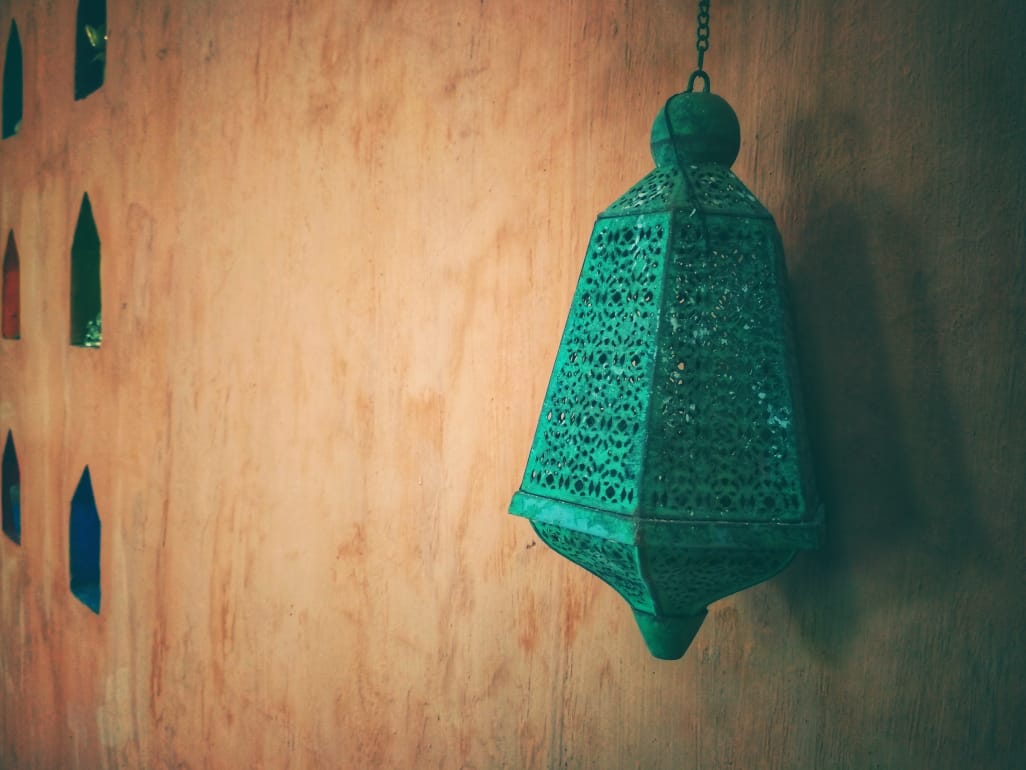
On the other hand, to build the staircases, the duo sourced wood from factory units in the automobile sector. This wood was previously used to import vehicles, and it gets it a new lease of life by this repurposing.
“All the doors have been sourced from demolition sites, and we have used them as is. Even our bathroom doors have been upcycled!” exclaims Gargi.
Wiring is an important aspect of any home, and, none of the wirings in this house has been covered with plastic panels. As an alternative, they used this n upcycled wooden panels to cover them. Gargi informs that elements upcycled for the interiors have been sourced from a local second-hand Sunday market.
They carefully foraged through this market and found some elements that give a stylish yet quirky touch to their home. Old wooden trays, for example, serve as the body for switchboards. Large wooden spools that had meters of wires wrapped around them were upcycled to make beautiful sitting stools.
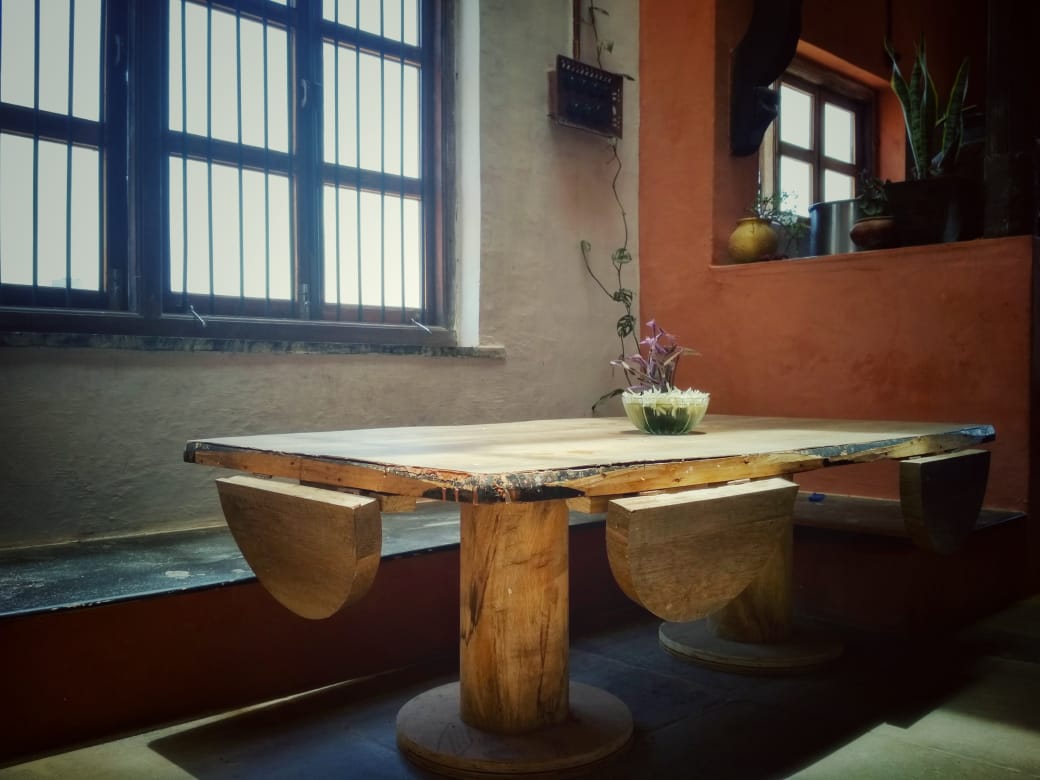
The duo also found an amazing dining table set for six at just Rs 6,000!
“We decided to detach the dining table top from the legs. We placed a glass surface on top of these four legs and made an office table with it, while we took six spools and placed the dining table top to make a unique dining table,” she informs.
They also found an old baby cot and placed a glass tabletop. This is now a beautiful centre table in their sitting room. Another unique element used in the house is the metal frame of an old foot-operated tailoring machine which has been upcycled as a stand for a basin. Even the curtain rods are made using bamboo, and the curtains have been stitched from old sarees.
Overcoming Hurdles and Completing the Project
It took over one year of construction, after which the couple finally moved into this house with their child this January. The passion with which Gargi speaks of her home shows that their home was a labour of love. However, this does not discount the countless struggles they overcame to transform their dream into a reality.

“Since this was the first time we were building something using traditional and sustainable techniques, everything was executed on trial and error. This meant that we spent extra time and money while figuring out what would work best for the house,” informs Gargi.
Another challenge was convincing masons about the techniques.
Now, Gargi informs, that they are living their dream of a zero-waste lifestyle. They avoid packaged food and drinks to cut plastic use in their lives. The duo also maintains a kitchen garden on the terrace, where several vegetables are grown.
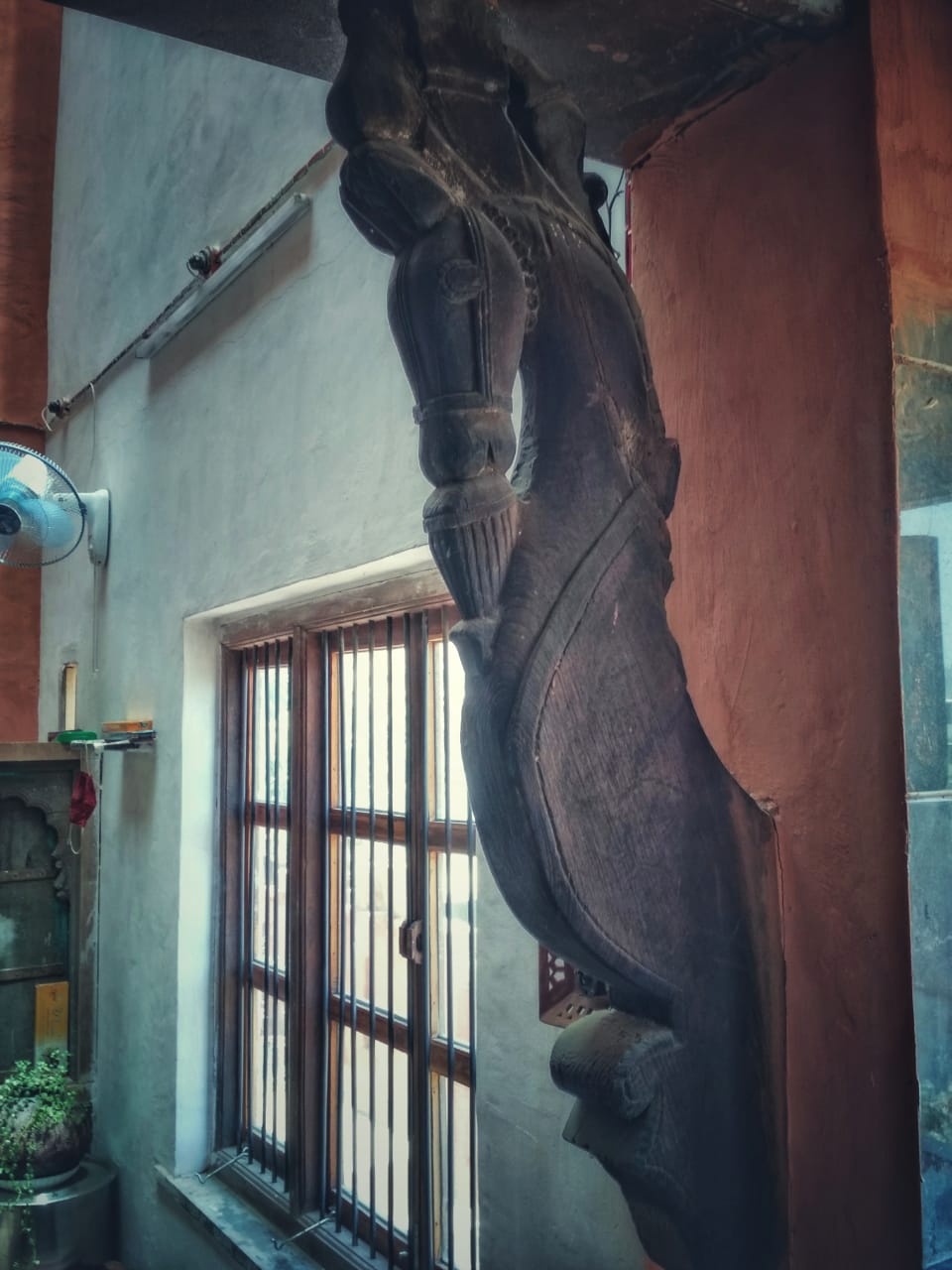
“The reason for leading a sustainable life is that it keeps us connected to nature. Our practices have been implemented, keeping nature in mind. Every morning, I wake up at peace in our home,” she says, signing off.
(Edited by Shruti Singhal)
Like this story? Or have something to share?
Write to us: [email protected]
Connect with us on Facebook and Twitter.
If you found our stories insightful, informative, or even just enjoyable, we invite you to consider making a voluntary payment to support the work we do at The Better India. Your contribution helps us continue producing quality content that educates, inspires, and drives positive change.
Choose one of the payment options below for your contribution-
By paying for the stories you value, you directly contribute to sustaining our efforts focused on making a difference in the world. Together, let’s ensure that impactful stories continue to be told and shared, enriching lives and communities alike.
Thank you for your support. Here are some frequently asked questions you might find helpful to know why you are contributing?


This story made me
-
97
-
121
-
89
-
167











